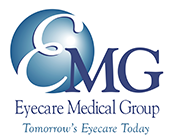
In February, the American Academy of Ophthalmology observes Age-Related Macular Degeneration Month. Also called AMD, this eye condition is common in adults over 60.
It can cause significant visual problems. As with many age-related eye conditions, it’s essential to understand the disease and know your risk. Most importantly, always have regular eye exams to detect and diagnose any eye conditions as early as possible.
Keep reading to learn 4 things you can do to observe age-related macular degeneration awareness this month and all year round:
1. Know What You’re Dealing With
Macular degeneration refers to the deterioration of the macula, which is the center of the retina. The retina is the thin membrane at the back of your eye.
It’s made of special cells called photoreceptors. Photoreceptors receive light that passes through the eye and then sends impulses back to the brain.
They then form images you can understand. Macular degeneration causes visual problems because it kills these photoreceptors.
There are two kinds of AMD: dry AMD and wet AMD. Dry AMD occurs when tiny yellow deposits called drusen start to appear in the macula.
As a person ages, they can grow, killing the photoreceptors in the macula as they get bigger. Wet AMD occurs when blood vessels grow abnormally under the macula and begin to swell and leak. When the macula swells and leaks, it causes scar tissue, killing photoreceptors.
2. Know the Symptoms
Like many age-related eye conditions, AMD doesn’t have many symptoms in the early stages. The first symptoms that appear happen when damage has already occurred.
Damage to the macula, and the photoreceptors, is irreversible. Any symptoms that occur after are permanent.
These symptoms may include blurry vision, patches of blurry vision or darkness, and in rare cases, poor color perception. AMD doesn’t usually cause total blindness, but it can harm your vision. The best way to manage it is through early detection and intervention.
3. Have Regular Eye Exams
If you have AMD symptoms, see your eye doctor as soon as possible. You should see your eye doctor regularly.
If you have AMD, it’s easier to diagnose in the early stages before any further damage occurs. As AMD has no symptoms in the early stages, it’s only possible to diagnose it during an eye exam.
Adults 60 and older are at the highest risk, but you should have yearly eye exams by your fifties. If you’re at higher risk for AMD due to a pre-existing medical condition or family history, you may want to see an eye doctor more regularly.
Your eye doctor can help you figure out the proper eye exam schedule. It’s up to you to stay on top of your eye health and remember to schedule your appointments.
4. Seek Treatment When Possible
There is no cure for AMD. The good news is that you can manage it. Treatment aims to slow down damage to prevent further vision loss.
For wet AMD, there are a variety of ways to do this. One standard method is injecting medication into the eye that inhibits new blood vessel growth. Various laser therapies can also destroy new blood vessels.
Dry AMD is trickier, and while there are some experimental treatments, the most effective method is taking certain vitamins. These vitamins slow and even prevent vision loss.
When the damage to your vision is extensive, there are also low visual aids, which utilize specialized lenses or electronics that may still help you see.
Treatment is most effective the earlier you receive a diagnosis, making regular eye exams necessary. Having eye exams will help your eye doctor detect AMD or any other eye condition as early as possible.
Do you have more questions about AMD? Schedule an appointment at Eyecare Medical Group in Portland, ME, to learn more!





